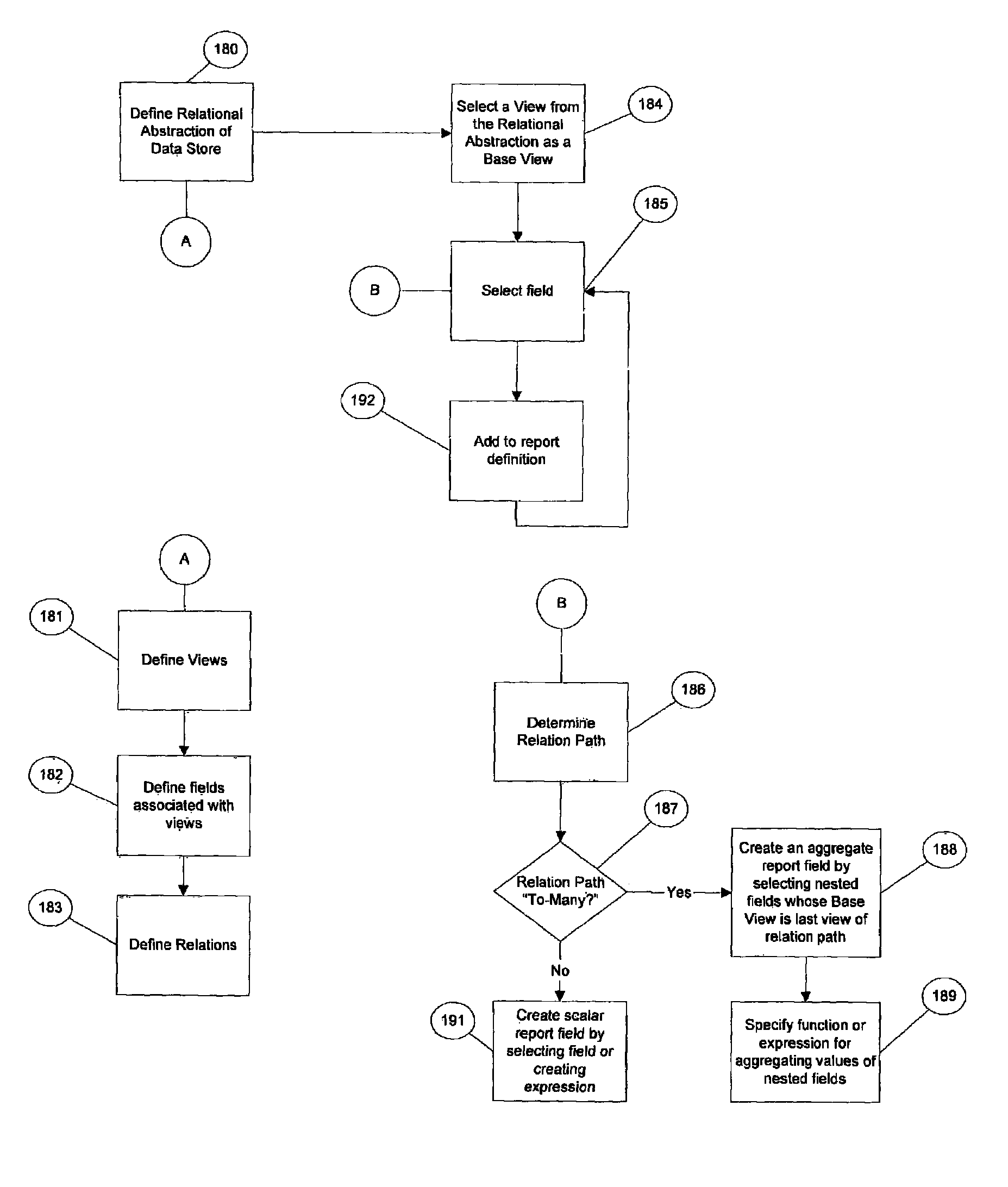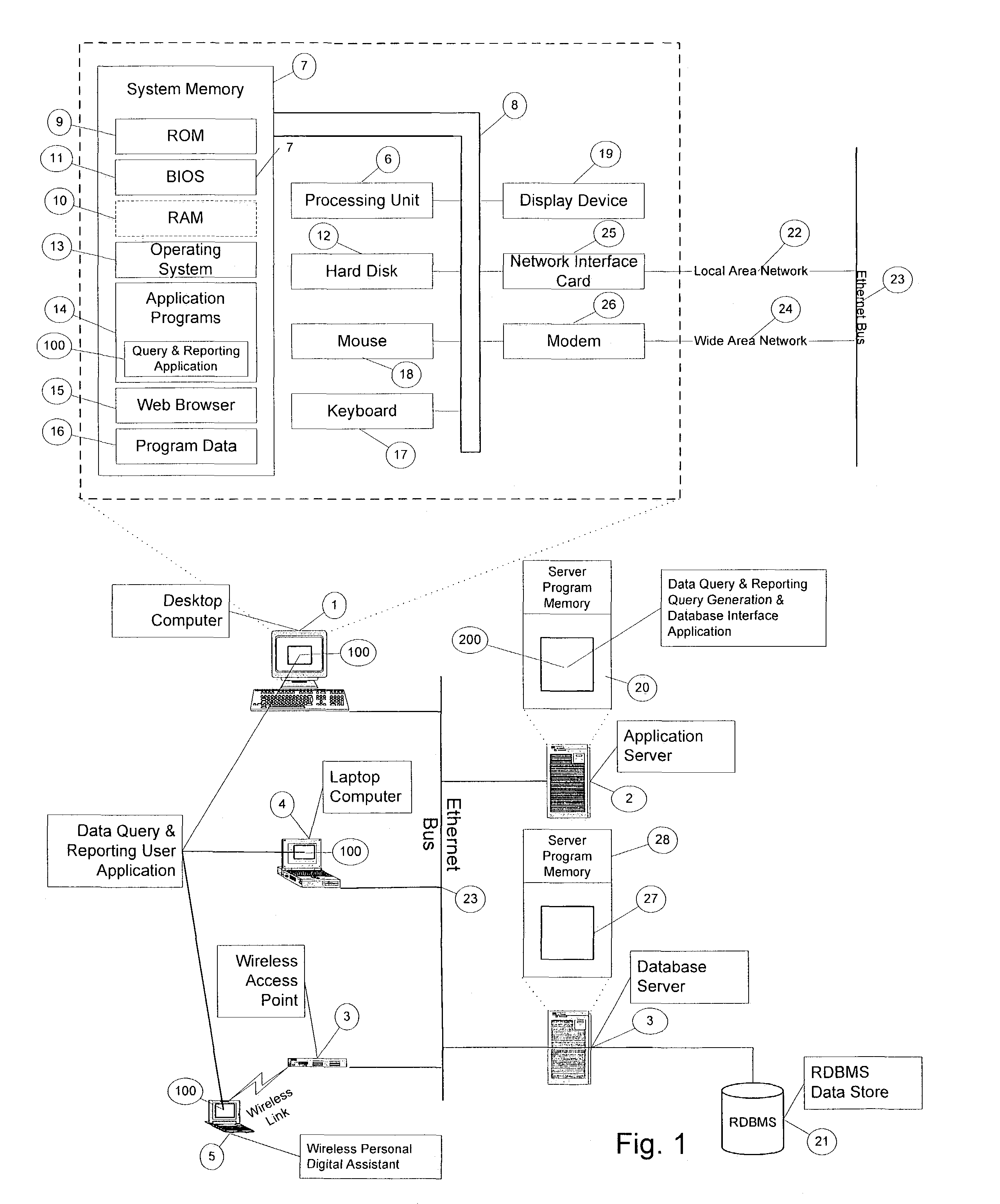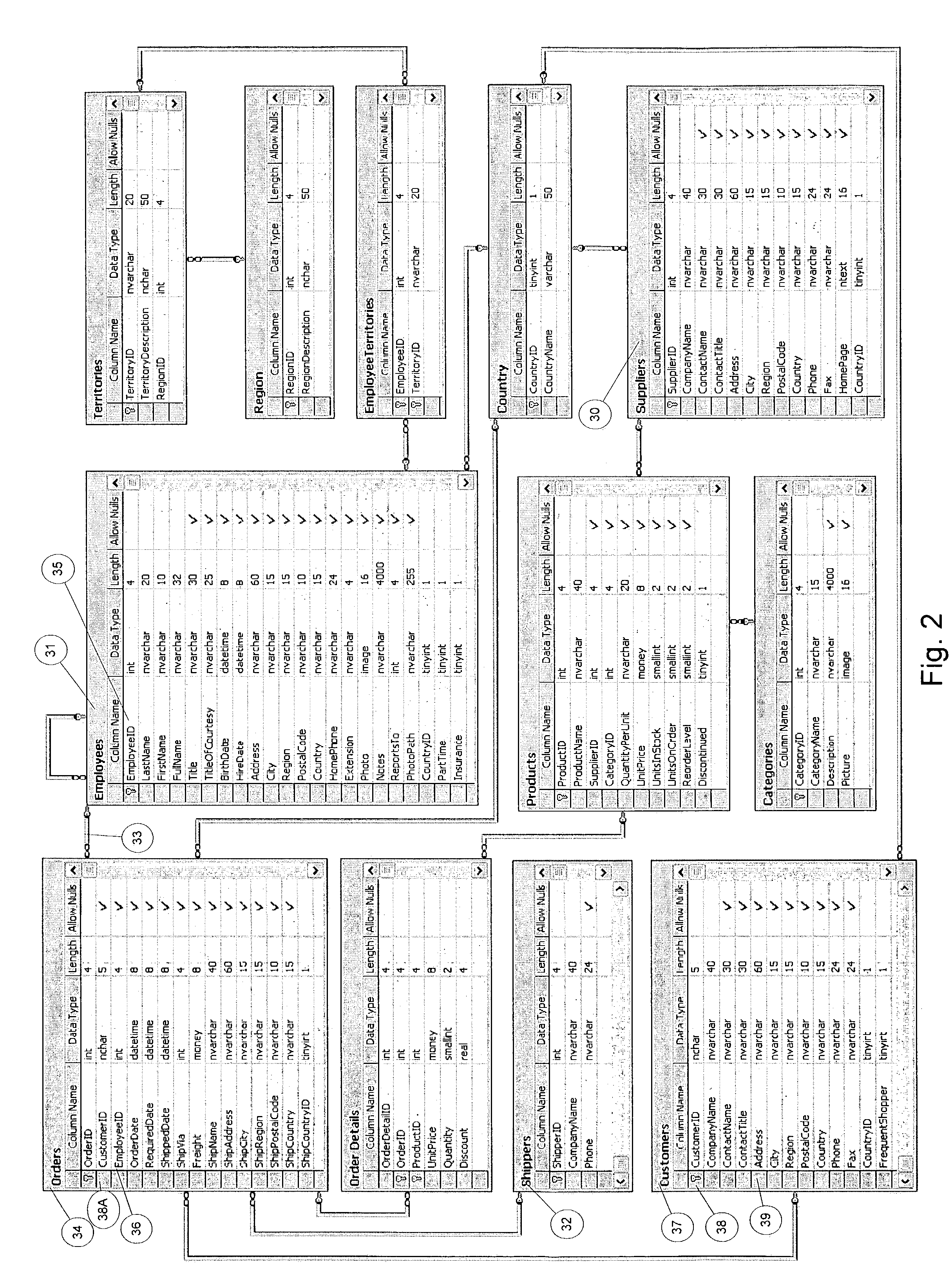Method and system for building a report for execution against a data store
a data store and report technology, applied in the field of information processing, can solve the problems of limiting the usefulness of data, wasting time and human capital, and still existing problems
- Summary
- Abstract
- Description
- Claims
- Application Information
AI Technical Summary
Benefits of technology
Problems solved by technology
Method used
Image
Examples
Embodiment Construction
[0091]The present invention may be embodied in a computer database query and reporting system that groups and displays selected database data based upon base views, and the fields and relations associated with those base views. Selected database data is displayed on a display surface according to row, column, summary and group criteria chosen by a user. The display surface is typically an active window on a display device of a simple application program, but the display surface may alternately be a window of a web browser or any application program operable for displaying and manipulating data. The display surface is typically a monitor, but may alternately be a printer, flatscreen LCD display, television, and soon.
[0092]In one embodiment of the invention, the display surface includes a query construction window and a query reporting window. The query construction window includes a recursive tree structure area, a column drop area, a group drop area and a measures drop area. The rec...
PUM
 Login to View More
Login to View More Abstract
Description
Claims
Application Information
 Login to View More
Login to View More - R&D
- Intellectual Property
- Life Sciences
- Materials
- Tech Scout
- Unparalleled Data Quality
- Higher Quality Content
- 60% Fewer Hallucinations
Browse by: Latest US Patents, China's latest patents, Technical Efficacy Thesaurus, Application Domain, Technology Topic, Popular Technical Reports.
© 2025 PatSnap. All rights reserved.Legal|Privacy policy|Modern Slavery Act Transparency Statement|Sitemap|About US| Contact US: help@patsnap.com



